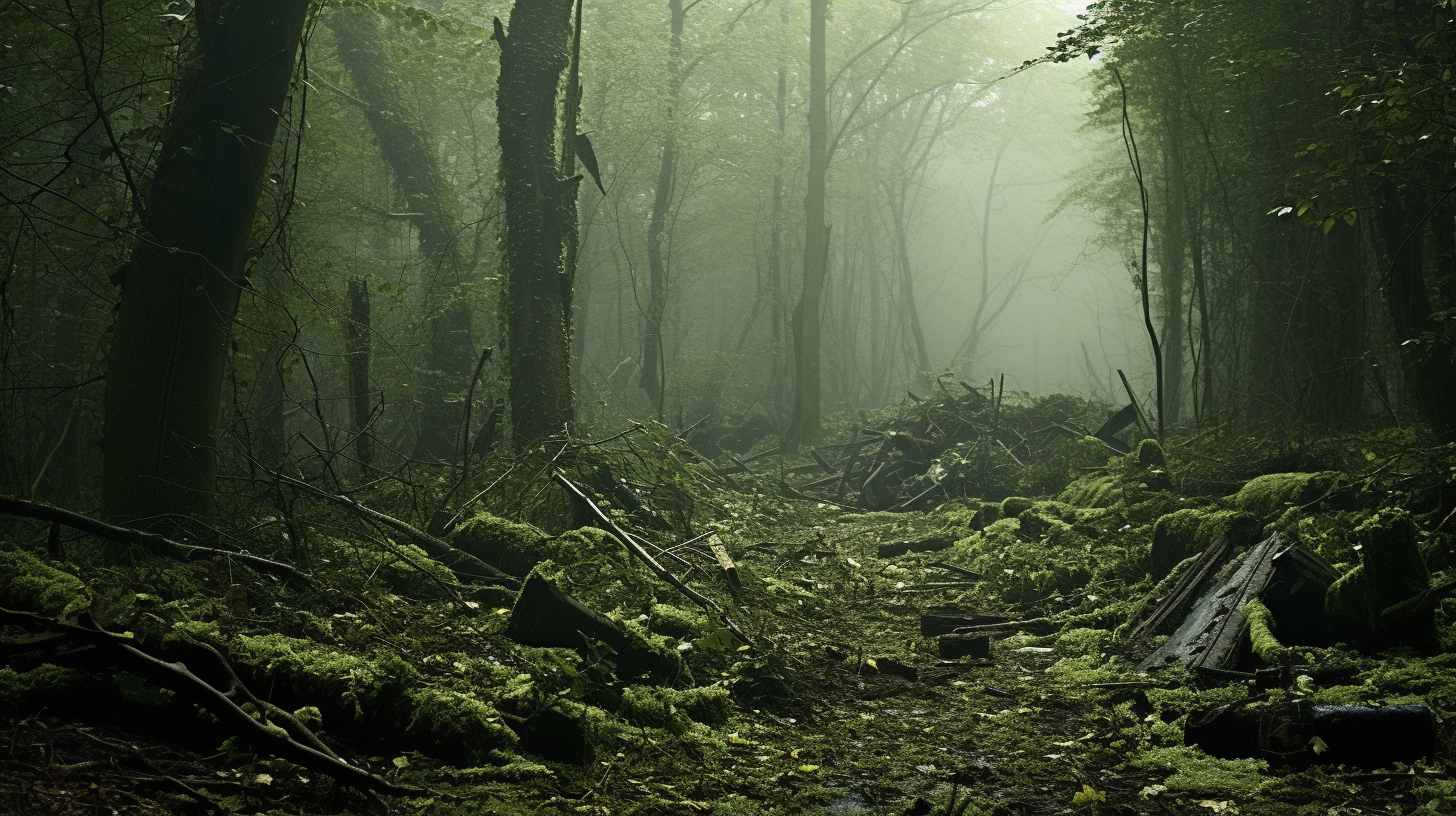Whispers of leaves have long been silenced, and where the proud stance of timber once marked the horizon, now only the bleak hush of emptiness prevails. In our quest for the spectral remnants of bygone woodlands, we roam the fields of despair in ‘Phantom Forests: Seeking the Ghosts of Our Green Past.’ It is not merely a search; it is an epitaph to the verdure that adorned our planet, a hymn sung in the faint echoes of rustling branches that no longer sway in the wind.
Our journey is a poignant pursuit of memory, against a backdrop where the phantoms of trees stand as stark reminders of a verdant legacy lost to the annals of time. Visualize if you will, expanses that were teeming with life, a labyrinth of flora and fauna, the diverse tapestry of ecosystems that have all but faded into the annals of oblivion. The tragedy of our era is not just the disappearance of trees, but the mass extinction of narratives that these silent sentinels of nature once inscribed into the Earth’s biography.
The few pockets that survive, gaunt and leafless, wrench hearts and provoke the mind. How does one comprehend the full measure of what is lost? The term ‘phantom forest’ is a disquieting paradox – a forest, by its very essence, signifies life-abundance, yet the phantoms we encounter are vacuous realms, spectral shell’s of what was once the flourishing lungs of our planet.
These haunts are far more than ecological casualties; they are corporeal manifestations of human enterprise gone awry. Explorations reveal landscapes scarred by relentless clear-cutting, plagued by the specter of climate change edging ever closer to a tipping point of no return. The ribbon-like streams and winding rivers that nurtured these botanical titans are now dry, while the soil, stripped of its arboreal protectors, is naught but dust.
It is in these barren clearings we see the remnants of majestic giants. ‘Stump graveyards’ sprawl across the land, monuments to the insatiable appetite that cut short the lifeblood of myriad species. Imagine the home of the jaguar, the nesting sites of countless birds, the haven for insects, amphibians, and small mammals – all a hollow dream trying to claw its way into present reality.
In the hush of these hollowed grounds, there is a dire warning – a presage of the forthcoming devastation awaiting our own species. Can one hear the silent screams of the wild that once was, or the mournful laments for the cradle of biodiversity now lain to waste? Our dispatches from the future, ‘Requiem for Rainforests’ and ‘Chlorophyll Eclipsed’, have painted the canvas of this bleak scenario, and yet we delve deeper into the art of loss, highlighting the world’s dire need for reflection and change.
As we navigate through the shadows in search of the ghosts of our green past, we are confronted with a chilling reality; these forests are the reluctant witnesses to the unyielding progress of our own dissolution. Though the future may seem written in the ashes of the past, glaring in its inevitability, the lamentations of our phantom forests must catalyze an awakening. They stand as a testament to what was and an urgent plea for what might still be reclaimed.
We leave you with a dystopian image; the gaunt silhouette of a child tracing the outline of a tree in the barren soil – a haunting tableau of innocence juxtaposed with the stark forewarning of a legacy squandered. It is an unsettling epilogue to a tale that is still being etched in time, a tale that begs not for an ending, but for a renaissance of conscience.
